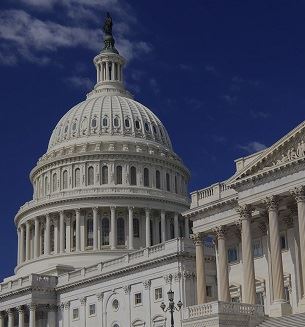Federal Crime Lawyer: Protecting Your Legal Rights Against Serious Federal Charges
Federal Crime Lawyer: Protecting Your Legal Rights Against Serious Federal Charges
Blog Article
Debunking the Refine of Federal Appeals: What You Required to Know
Browsing the elaborate realm of government allures can typically look like going across undiscovered waters for those unfamiliar with the process. Understanding the subtleties of appellate court territory, the details of filing a notice of allure, offering a compelling short, and making a convincing oral disagreement are essential components that can substantially influence the end result of an instance. By unraveling the layers of complexity bordering government appeals, individuals can obtain a clearer understanding right into the devices that control this critical point of the lawful system.
Comprehending Federal Appeals Process
Exploring the complex realm of the federal appeals procedure reveals a systematic and structured journey via the judicial system - federal antitrust appeals. Federal charms function as an important mechanism for reviewing choices made by lower courts. Recognizing this procedure is necessary for any individual associated with lawful proceedings at the government level
The procedure normally begins with a party disappointed with a lower court's ruling filing a notification of charm. This activates a testimonial by a greater court, where a panel of courts assesses the lawful disagreements provided by both events. Briefs describing the lawful thinking behind each party's position are submitted, and dental debates may be heard to make clear complex concerns.
The appellate court's decision is based on a thorough examination of the lower court's proceedings and the arguments offered. Once the appellate court reaches a choice, it can verify, turn around, remand, or customize the lower court's ruling, supplying clearness and finality to the legal conflict.
Appellate Court Territory Explained

Appellate courts have jurisdiction over certain kinds of cases, normally those including lawful errors, step-by-step concerns, or concerns of regulation as opposed to factual disputes. The territory of appellate courts is generally laid out in statutes and legislations that regulate the court system. Recognizing appellate court territory is crucial for events involved in the appeals process as it identifies whether a situation is qualified for review and the degree to which the appellate court can intervene in the reduced court's choice.
Declaring a Notice of Appeal
The first action in beginning the government charms procedure involves filing a Notice of Appeal with the ideal appellate court. hawaii federal appeal lawyers. This vital paper officially informs the court and the various other parties associated with the case that the appealing event intends to look for an evaluation of the reduced court's choice. Filing a Notification of Appeal is a strict procedural need that establishes the appellate procedure in motion
When preparing the Notice of Allure, it is necessary to make sure conformity with the certain guidelines and guidelines of the relevant appellate court. The document must commonly consist of information such as the case name, the lower court's name, the date of the judgment being appealed, and a succinct statement suggesting the premises for the allure.
Timeliness is of the essence when submitting a Notification of Charm. Missing out on the target date for sending this file can result in the allure being dismissed, emphasizing the relevance of accurate and timely initiation of the allures procedure. It is advisable to seek legal support to navigate the complexities of submitting a Notice of Appeal successfully.
Rundown and Dental Argument
In the appellate process, offering composed briefs and participating in oral disagreements play crucial duties in supporting for the appealing event's placement before the appellate court. Briefs are extensive lawful documents that lay out the parties' disagreements, lawful authorities, and analysis supporting their positions. These created entries provide the court with a detailed understanding of the realities of the case, the pertinent regulation, and why the appealing event thinks the reduced court's decision need to be overturned.
Complying with the submission and evaluation of the briefs, dental arguments supply the celebrations a possibility to more clarify their settings, resolve any type of inquiries the appellate judges might have, and highlight essential factors from their composed briefs. Dental debates are a possibility for the attorneys to encourage the judges through verbal advocacy and responses to questions from the bench.

Getting the Appellate Court Decision

Conclusion
To conclude, the government allures procedure is a complicated yet important action in looking for justice. Recognizing the appellate court jurisdiction, submitting a notice of appeal, preparing briefs, and presenting dental debates are all essential elements of this process. Inevitably, obtaining the appellate court decision can give clarity and resolution to legal disagreements. It is essential to browse the federal charms procedure with persistance and focus to detail to attain a reasonable outcome.
As we advance from comprehending the federal appeals procedure to dissecting the ins and outs of appellate court territory, a basic aspect comes to light relating to the authority and limits of these higher courts in the lawful landscape. Appellate court territory refers to the extent of cases that a specific appellate court has the power to examine and choose upon. Unlike trial courts that listen to instances for the initial time, appellate courts are restricted to evaluating choices made by lower courts. Recognizing appellate court jurisdiction is critical for events entailed in the charms procedure as it establishes whether a situation is qualified for evaluation and the extent to which the appellate court can intervene in the lower court's choice.
Whether the appellate court attests, reverses, or remands the reduced court's decision, recognizing the ramifications of the judgment is vital for all parties entailed in the appellate procedure.
Report this page